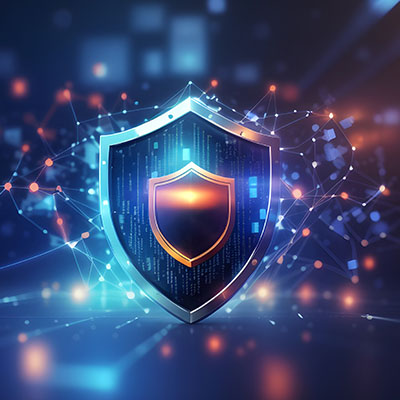The effectiveness of your business’ IT security heavily relies on the functionality of your IT operations. Ensuring that your staff understands their role in safeguarding your business assets is imperative. Let’s delve into the essential priorities for establishing a robust security training platform—an indispensable element in fortifying your business’ IT defenses. Evaluate and Improve Your Security Posture You may be familiar with the term “security posture,” denoting how proactive an individual is in protecting themselves online. Given the prevalence of cloud-based applications and the growing adoption of remote work, employees play a crucial role in organizational cybersecurity. Enhancing security practices is of utmost importance. Consider these four key aspects to guide your cybersecurity strategy: Improving Employee Relatability Engaging individuals outside the security domain in network security demands creativity. Emphasize relatability by incorporating real-world examples in educational materials. Connect with employees who may have experienced identity theft or data leaks, illustrating how protective measures align with safeguarding personal data. Consistently Promote Security People are influenced by a security-rooted company culture, significantly impacting employee behavior. Consistently emphasize the importance of comprehensive security to resonate with your staff and effectively reinforce the message. Provide Consistent Training and Regular Testing While pushing the security agenda is crucial, it must be complemented with tailored training addressing specific issues. Employees should understand concepts such as avoiding phishing, knowing network resources, recognizing their role in data protection, practicing solid password management, and responding to security mistakes. Regular testing ensures ongoing awareness and understanding. Lead From the Front Acknowledge that network security might not be a primary concern for the average employee. Assure them that decision-makers address these issues while also recognizing their pivotal role in safeguarding the business. As a security mentor, adopt a supportive approach, providing documentation and resources to bridge understanding gaps. Emphasize the importance of following procedures rather than delving into intricate IT system details. At White Mountain IT Services, we can assist you in developing a comprehensive plan to protect your business end-to-end. Our consultants can help formulate procedures and a training plan, providing the necessary resources for enhanced security. For more information, contact us today at (603) 889-0800.
You might have noticed that business insurance companies are starting to show an interest in how you are protecting your technology and data. If your org has been in touch with your insurance provider regarding modifying or renewing your business insurance, you were likely handed a lengthy questionnaire about your cybersecurity. Let’s take a look together to help you make informed decisions on how to handle your IT and how to prevent your insurance costs from skyrocketing.
Let?s consider how your IT may need to meet certain compliance standards, and how we can help ensure it does. How Do IT Compliance Needs Impact a Small or Medium-Sized Business? To get some context, let?s begin by identifying what IT compliance specifically looks like when a business incorporates it properly. By definition, IT compliance is a business? practice of abiding by various regulatory requirements that pertain to the use of technology as a means of ensuring the security of client or customer data. These regulations can come from different sources. Some are established by law for different industries, like the Health Insurance Portability and Accountability Act (HIPAA) does for the medical field, and others are implemented by industry authority groups, like the Payment Card Industry Digital Security Standard (PCI DSS) was agreed upon by a consortium of payment card providers. Failure to comply with such standards and regulations can have various consequences to the organizations expected to do so, ranging from monetary fines to lost privileges. Let?s make one thing very, very clear: these fines are not something to be taken lightly. Depending on the compliance framework that your organization has violated, these fines can reach truly painful levels. A business that severely violates the United Kingdom?s General Data Protection Regulation (GDPR), for example, could be fined 20 million euro or four percent of their global turnovers. It defaults to the higher penalty, too. This is just one of many regulations that your business could potentially be held accountable for, depending on your industry and what it is you do. Common Compliance Standards with IT Ramifications What follows are a list of standards that you could likely need to consider, particularly where your IT is concerned: HIPAA (The Health Insurance Portability and Accountability Act): Amongst other requirements, HIPAA establishes standards regarding patient information confidentiality and security for the healthcare industry and any affiliated parties. NIST SP 800-171: This standard, established by the National Institute of Standards and Technology, places various cybersecurity requirements on businesses working with federal and state agencies in the U.S. GDPR (The General Data Protection Regulation): This law, established to protect the information of European Union citizens and residents, applies to any company?globally?that utilizes this data. PCI-DSS (The Payment Card Industry Data Security Standard): This standard, implemented by PCI Security Standards Council, puts data security requirements on any business that wants the ability to accept payments via card. Again, this is just a selection of some of the more well-known standards?more could easily apply to your specific situation. Fortunately, you don?t have to navigate your IT compliance needs alone. Turn to Us for Assistance in Meeting Your IT Compliance Requirements As part of our managed services, White Mountain IT Services can help ensure that your business technology is not only functional, but is aligned with the standards it needs to meet. Find out more by giving us a call at (603) 889-0800.
Build an Emergency Contact Sheet as a Part of Your Business Continuity Plan Yep, it sounds simple. In fact, it?s probably something that you already have, but let?s make sure that it?s up-to-date and includes some good information that will help you and your staff in case there is a major disruption to your business. What do we mean by a disruption? Let?s assume you can?t access any of your systems; your line of business apps, your email, your contacts, and the documents on your server. Let?s assume that something big locks you and your staff out of everything for a day or two. It?s not ideal, and obviously we want businesses to work with us to be more prepared for this, and have safeguards in place to prevent this type of threat. Even so, having a really good contact list is going to be key for communication. Open up a Word document and list out the name and personal phone number of each employee, starting with management. Note if that number is a cell phone (so you know which numbers can be texted). Next, list out emergency contact information?the local fire department, police, 911, etc. List out insurance contact information. If you have an alarm company, add them to the list, and other vendors you might need to reach. We recommend adding (603) 889-0800 so you can call us if you need help. Finally, depending on your business, you may want to add some of your biggest, most important clients to that list. You?ll want to contact them first thing and let them know that there may be a disruption of services. If one morning you get alerted that your entire network is down and nobody can access anything, you?ll be so glad you had this. That?s a Good Start, But Business Continuity Doesn?t End There Having a thorough, tested business continuity plan is an important tool for any organization. Communication is key, and you?ll want to be able to keep your staff and customers in the loop if something disrupts your services. At White Mountain IT Services, we help businesses prepare for emergencies with our iron-clad data backup and disaster recovery services, and we can help protect your business from online threats and other problems that could cause major disruptions. For more information, give us a call today at (603) 889-0800.
Breach Detection Methods The first step is to build your system of breach detection methods. Because hackers and their malware aim to be invisible until they strike, it’ important to have a wide range of detection measures to identify when a breach – or the infection before the breach – occurs. Network Monitoring Network monitoring tracks all behavior across multiple systems ranging from CPU core temperature to network activity. Network monitoring allows you to track when hidden processes are using resources and unauthorized network access. Network monitoring is the channel through which all access data flows, and with expert interpretation, can reveal a breach as it happens. Access and Control Management Access and control management is the new method by which everyone with access is given minimum access. Each employee and customer can only open the files they specifically need. By tightly controlling access, you can then go on full-alert when unauthorized access occurs. Virus Scanning Naturally, your virus scanning software plays a role. Should a program try to download, install, or run with the clear traits of a computer virus, your traditional protective software should alert to the malware presence. Human Suspicion Sometimes, a staff member will bring a suspected hack to light. They may report an unusual computer activity or something unexpected in the data logs. Because humans work with the system every day, they can notice signs of an otherwise well-hidden hack . Make sure to have an available and encouraged channel for staff to send in cybersecurity suspicion reports for everything from phishing emails to unusual keystroke responses. Who Should Be Alerted Who should be told when one of your detection systems alerts on a possible data breach? CIO or CTO Your C-suite chief of information and/or technology in the company is likely high on the list of people who should be notified. They will rally the troops and decide the right course of action for a breach response. Network Administrator Your lead administrator who handles the network and security of your business systems is often the first person flagged by automated breach detection methods. They are also in the best position to take immediate action for damage control and recovery. Cybersecurity Specialist If your team has a cybersecurity specialist, they may be first on the list of people alerted when breach is detected or suspected. IT & Security Agency Many companies have an IT agency that supplies their network and cybersecurity support. If a breach is detected, they are likely already responding or will need to be the first called to take defensive action on behalf of the company. Damage Minimization Measures Make plans to swiftly minimize the damage of a data breach as soon as possible. The goal is to isolate the malware or hacker’s access to your system before eradicating the invasion, closing the breach, and recovering to an uncompromised state. This starts by protecting the rest of your network, endpoints, servers, and cloud assets from exposure. Isolate Infected Systems or Files Identify which files, data systems, or servers are infected and isolate them. With physical systems (and before the cloud) this might mean pulling the network cable so no other systems are infected. Isolation is more complex in modern business information systems, which will require a unique approach based […]
- 1
- 2




